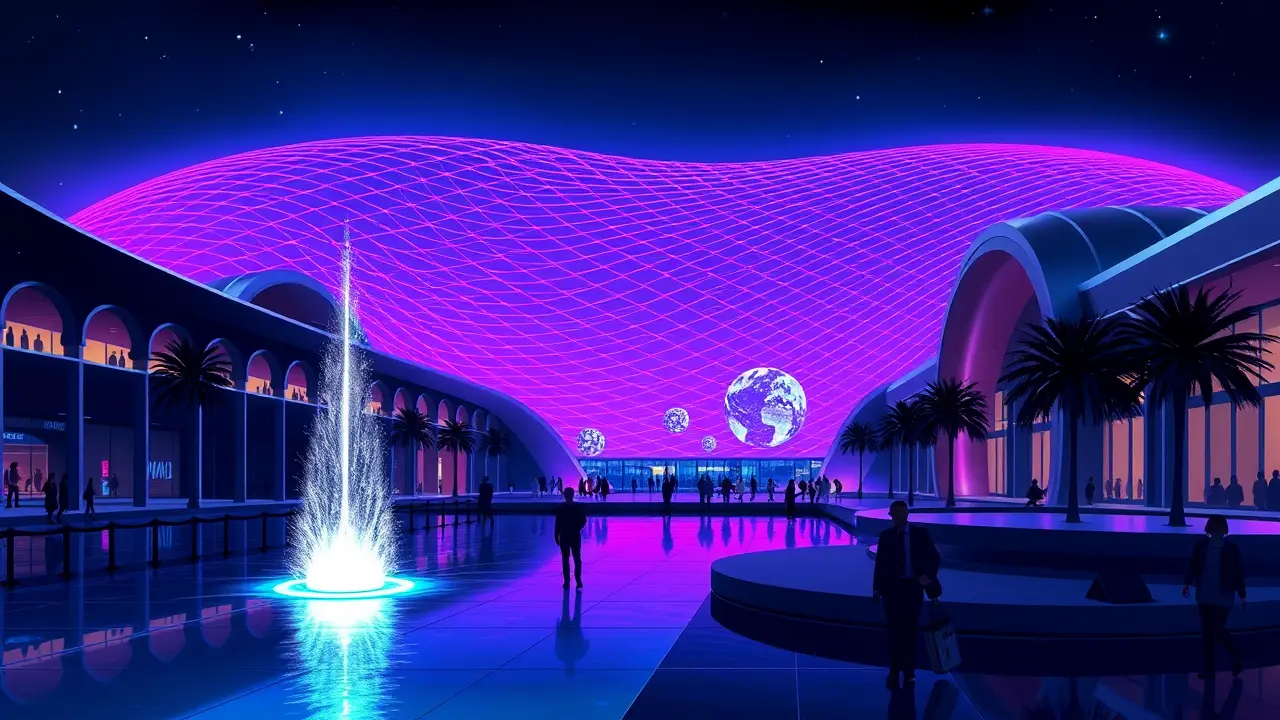
Entertainmenttheatre & artsArt Exhibitions
Qatar Launches New Art Quadrennial Amid Growing Market
LI
Lily Harper
18 hours ago7 min read
The glitterati and art world elite are buzzing with the news that Qatar, the Gulf's glittering jewel, is launching a brand-new art quadrennial, a move that solidifies its ambition to become a global cultural powerhouse. This isn't just another stuffy art event; it's a full-blown glamorous spectacle, joining the nation's already impressive roster of international offerings that includes the prestigious Art Basel Qatar and its own dazzling pavilion at the Venice Biennale—think of it as the art world's equivalent of a celebrity securing a coveted EGOT.But beneath the shimmering surface and the promise of opulent gallery openings lies a billion-dollar question, one more gripping than any season finale of a hit reality show: can this petrostate, with its seemingly bottomless sovereign wealth fund, actually cultivate a self-sustaining, organic art market, or is this all just a beautifully curated facade? The narrative is straight out of a blockbuster plot—a nation historically known for its natural gas reserves is now aggressively collecting cultural capital with the same fervor its museums acquire multi-million-dollar masterpieces by the likes of Cézanne and Koons. This new quadrennial is the latest power play, a statement piece designed to shout to London, New York, and Hong Kong that Doha is not just a player but is intent on setting the table.The strategy is multifaceted and brilliantly orchestrated; by hosting a recurring, large-scale international exhibition, Qatar isn't just importing art world celebrities for a weekend of parties; it's attempting to build a permanent ecosystem. This means creating a reason for galleries to set up permanent outposts, for critics and curators to relocate, and for a local collector base to emerge beyond the state's own acquisitive arms.We've seen this movie before, of course. Look at the United Arab Emirates and its Abu Dhabi Louvre and Guggenheim projects, or even the ambitious cultural districts sprouting in Saudi Arabia.Yet, the Qatari approach feels different—more concentrated, more deliberate, and backed by the Qatar Museums Authority, chaired by the formidable Sheikha Al Mayassa bint Hamad bin Khalifa Al Thani, a woman whose personal taste and purchasing power can literally move markets. She is the Anna Wintour of this scene, and her influence is undeniable.However, the arrival of an institution like Art Basel, while a massive coup, also brings intense scrutiny. It's one thing to fly in blue-chip art for a week and have the global elite marvel at it in air-conditioned luxury; it's entirely another to foster the gritty, unpredictable, and commercially driven gallery scene that defines a true art hub.Can local Qatari artists, nurtured by state-sponsored programs, break into the international mainstream without the perception of being state-sponsored? Will international collectors who buy a piece at Art Basel Qatar feel confident that there's a secondary market, a network of conservators, and a critical dialogue happening year-round to support their investment? The stakes are astronomically high, and the potential pitfalls are as dramatic as any red carpet scandal. A market built primarily on top-down, state-driven initiative risks being perceived as artificial, a Potemkin village for high culture.The true test will be whether the excitement generated by these glittering events can trickle down, creating a vibrant community of local galleries, daring artists, and middle-class collectors—the very lifeblood of markets in Berlin, London, or Los Angeles. The world is watching, popcorn in hand, to see if Qatar's grand vision for a sustainable art market is a fleeting trend or the beginning of a beautiful new era, a cultural revolution dressed in the finest fabrics and set against the most stunning architectural backdrop money can buy.
#Qatar
#Art Basel
#art market
#international art
#quadrennial
#cultural events
#featured
Stay Informed. Act Smarter.
Get weekly highlights, major headlines, and expert insights — then put your knowledge to work in our live prediction markets.
© 2025 Outpoll Service LTD. All rights reserved.